Suborder Lacertilia Genus Lacerta Phylum Chordata Rank Species | Subphylum Vertebrata Scientific name Lacerta dugesii Higher classification Lacerta Order Scaled reptiles | |
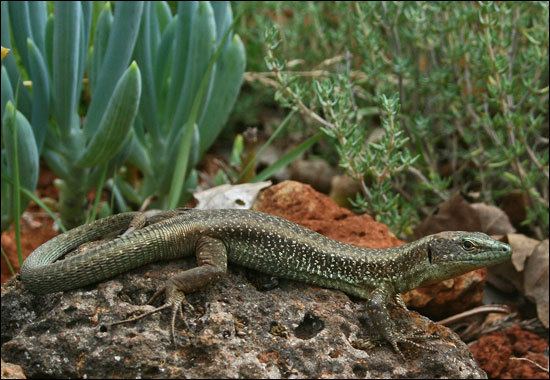 | ||
Similar Teira, Reptile, Lacerta, Lacertids, Sharp‑snouted rock lizard | ||
Madeiran wall lizard
The Madeiran wall lizard (Lacerta dugesii) is a species of lizard in the Lacertidae family. The species is endemic to Madeira Islands, Portugal. In the Azores, this lizard has become naturalized after involuntary introduction by the shipping trade between the two archipelagos.
Contents
- Madeiran wall lizard
- Madeiran wall lizards
- Etymology
- Habitat
- Taxonomy
- Description
- Behaviour
- Ecoepidemiology
- References
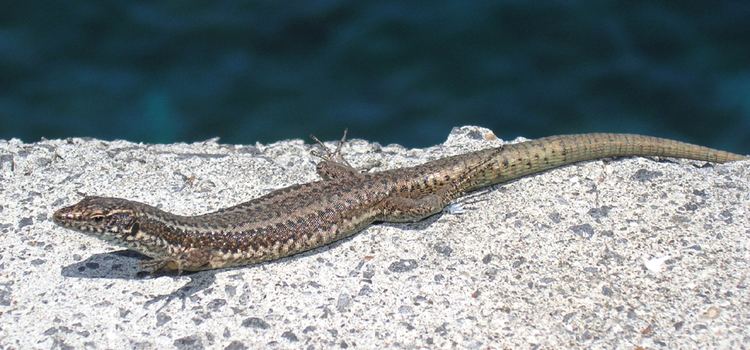
Madeiran wall lizards
Etymology
The specific name, dugesii, is in honor of French physician and naturalist Antoine Louis Dugès.
Habitat
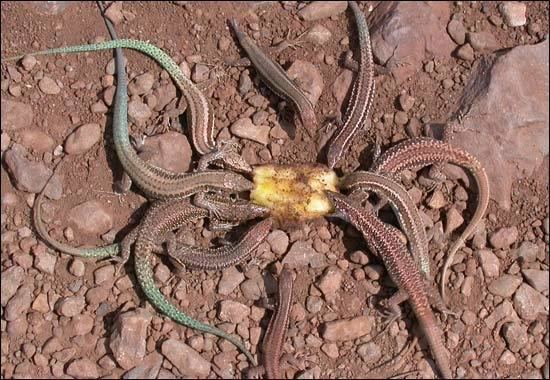
The Madeiran wall lizard's natural habitats are temperate forests and shrublands, Mediterranean-type shrubby vegetation, rocky areas, rocky shores, sandy shores, arable land, pastureland, plantations, rural gardens, and urban areas.
Taxonomy
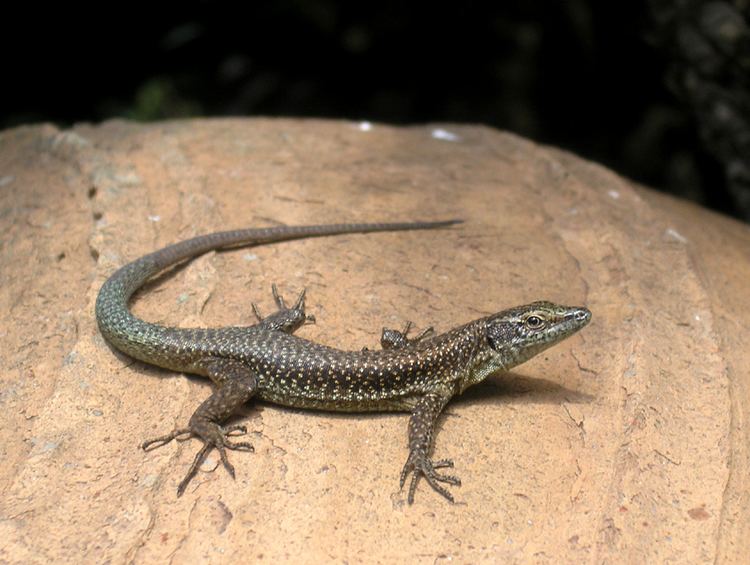
The taxonomy for the species is unstable: Lacerta dugesii, Teira dugesii, and Podarcis dugesii are synonyms. More citations are found under Lacerta dugesii.
Description
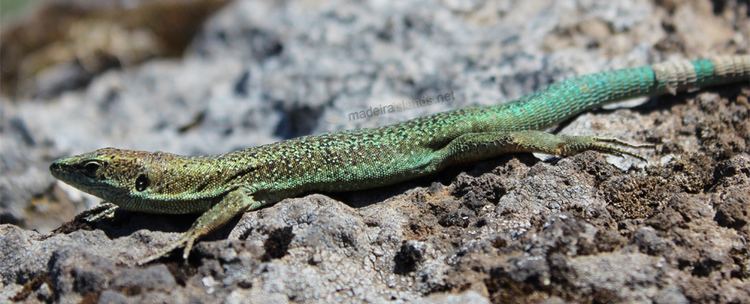
The Madeiran wall lizard grows to a snout-to-vent length of about 8 cm (3.1 in) with a tail about 1.7 times the length of its body. The colouring is variable and tends to match the colour of the animal's surroundings, being some shade of brown or grey with occasionally a greenish tinge. Most animals are finely flecked with darker markings. The underparts are white or cream, sometimes with dark spots, with some males having orange or red underparts and blue throats, but these bright colours may fade if the animal is disturbed.
Behaviour
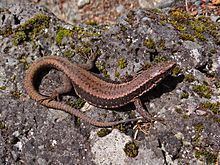
The Madeiran wall lizard is very common on the island of Madeira where it is the only small lizard, ranging from sea coasts to altitudes of 1,850 metres (6,070 ft). It is usually found in rocky places or among scrub and may climb into trees. It is also found in gardens and on the walls of buildings. It feeds on small invertebrates such as ants and also eats some vegetable matter. The tail is easily shed and the stump regenerates slowly. Females lay two to three clutches of eggs in a year with the juveniles being about 3 cm (1.2 in) when they hatch.
Ecoepidemiology
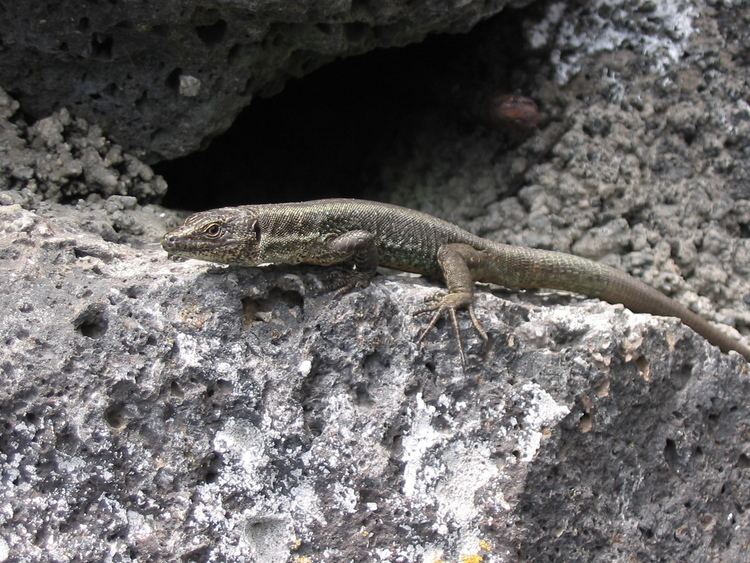
This lizard is one of many species may be parasitized by ticks and can act as a secondary or alternative reservoir for Lyme disease or other tick-borne zoonoses. Large mammals warm-blooded like deer and boar seem to have become the first epidemiologic tank (and/or host) for European ticks.
